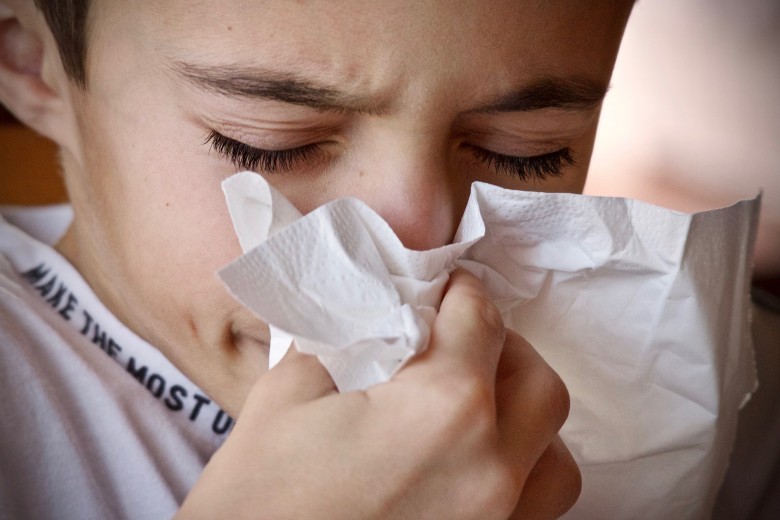
Sniffling, sneezing, coughing and blowing your nose probably seem like second nature to you -- and you likely don't put much thought into any of these "natural" occurrences. But maybe you should.
It is actually possible to injure yourself from coughing and sneezing in an improper way, and how you blow your nose may affect the duration of your illness.
When Sneezing and Coughing Turn Dangerous
Back injuries are one of the most common "side effects" of sneezing and coughing. Baseball player Sammy Sosa knows this first-hand. Back in 2004 when he played for the Chicago Cubs, two sneezes sent his back into spasms, causing him to need a chair to support himself. The injury -- a sprained ligament in his lower back-- caused him to miss part of the season.
A vigorous coughing or sneezing attack can leave you with upper or lower back pain (or spasms) because of their forceful nature, not only on your entire torso but also on your abdomen. This pressure is so intense that it can actually herniate a weakened spinal disc.
How to "A-Choo" Safely
Right before you sense a cough or sneeze coming on, take a few seconds to position your back correctly. Doing so will protect your back and help keep any existing pain to a minimum.
- Lean back slightly, placing a hand behind your back for support.
- When you sneeze or cough, bend your knees slightly.
- You can also (instead of above) stand up straight against a wall or door to keep your back from lurching forward when you sneeze or cough.
Blowing Your Nose: Good or Bad?
Commonsense would tell us that blowing our noses during a cold would help remove some of the illness-causing bacteria or viruses contained in the mucus, thereby helping us to feel better faster. But it turns out this may not be entirely true.
According to Dr. Owen Hendley and a team of researchers from the University of Virginia and the University of Aarhus in Denmark, blowing your nose may actually cause mucus to be propelled back into the sinus cavities.
Not surprisingly, blowing your nose creates a huge amount of pressure in the nose -- over seven times more pressure than is produced by sneezing or coughing.
The researchers placed an opaque dye into the rear nasal cavities of 10 study participants in order to determine whether the fluid would enter the sinus cavities. Three of the volunteers were asked to cough, three were induced to sneeze and four blew their nose. After measuring the fluid's movement with a CT scan, Hendley said:
"In the those who coughed or sneezed, there was no dye in any of the sinuses. And in all four of those who did the nose-blowing, there was dye in one or more of the sinuses ... with a nose blow, given the amount of pressure and how long it went on, you could move one milliliter of nasal mucus into the sinuses."
The problem with this, Hendley pointed out, is that "if you do propel mucus into your sinuses during a cold -- which I'm suspecting you would -- then not only is it mucus but it's mucus that's likely to contain bacteria, virus and may also contain mediators."
"It appears that it's quite likely that if you do blow your nose, then there's a potential you could be worsening your cold," he said.
How to Correctly Blow Your Nose
Sometimes, though, the relief that comes from blowing your nose may be enough for you to risk a potentially longer cold duration. When you do blow your nose, there is a proper technique that can both minimize the risk of mucus traveling back up your sinuses and reduce your risk of injury.
When you consider that adults blow their noses an average of 45 times a day during the first three days of a cold, proper technique could make all the difference.
- Blow your nose gently. Blowing too hard creates even more pressure that can force infectious mucus into your ears and sinuses.
- Avoid the "both-nostrils-open" blow. Instead ...
- Press a finger over one nostril.
- Gently blow your nose into a paper tissue through the one open nostril.
- Switch your finger to close the opposite nostril, and repeat.
- Although you will feel most "stuffed-up" when you first wake up (after lying flat all night), don't blow your nose immediately. It's best to wait five or 10 minutes after you've been sitting upright before doing so.
- Drink plenty of fluids. This will make it easier for mucus to be removed by blowing gently. Blowing your nose after taking a steamy shower can also help.
- Use paper tissues rather than cloth handkerchiefs. A used handkerchief is a breeding ground for germs -- and when you reuse it you're spreading those germs around your face and hands.
- Only use a paper tissue once, then throw it away. This minimizes the risk of putting germs back onto your face and hands.
- Wash your hands when you're finished, as germs from your nose and tissue will be transferred to your fingers while you blow.































